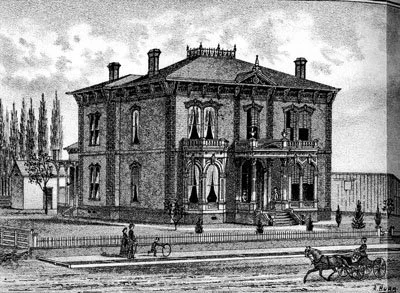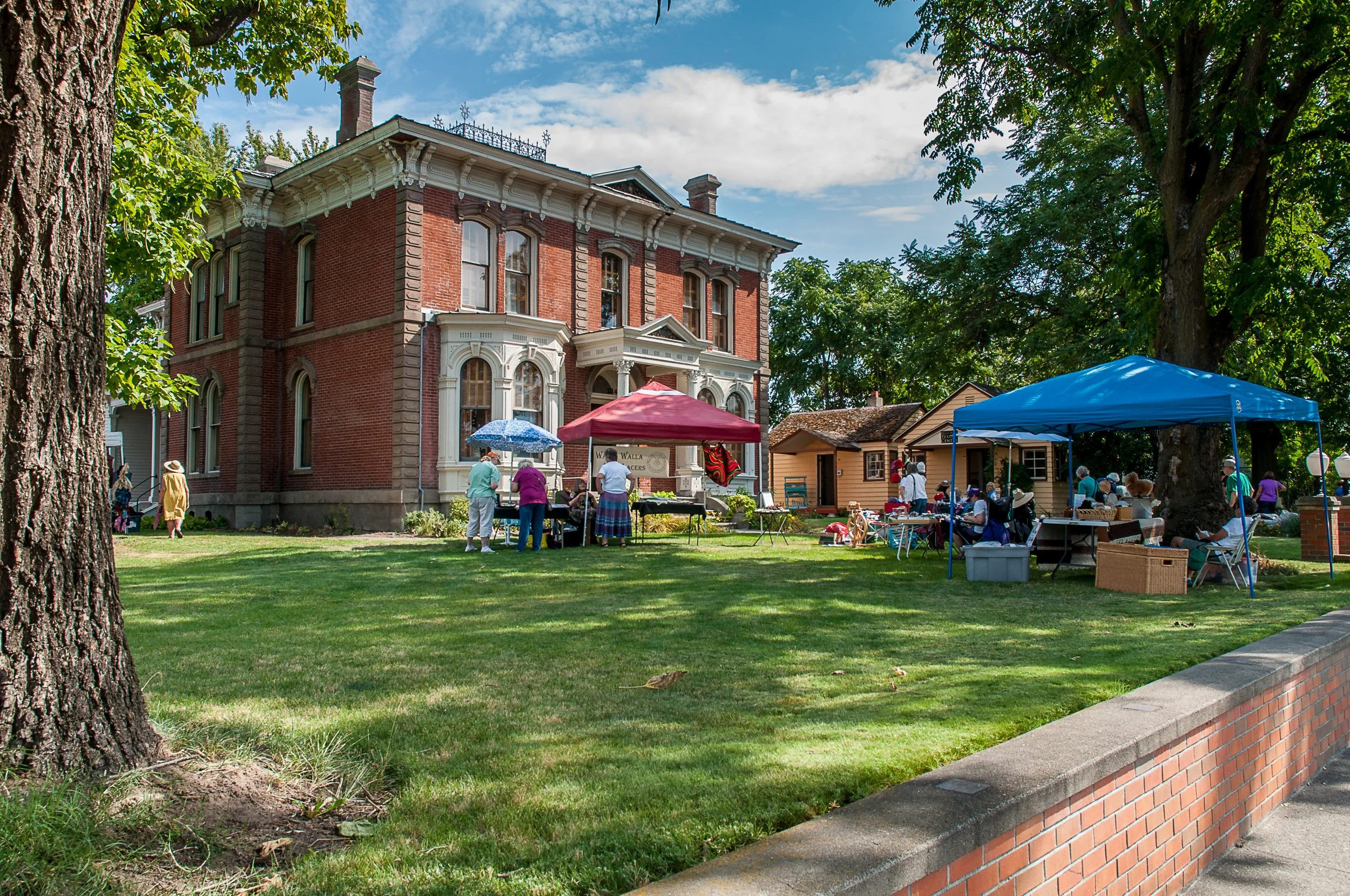The House
A Brief History
The Kirkman House was built between 1879-1880 of brick from the Weston, Oregon Foundry. When the house was completed, William and Isabella Kirkman moved in with their four surviving children, William Henry, Fanny Ann, Myrtle Belle, and Leslie Gilmore. The family built an addition comprising of a larger dinning room and kitchen in 1890. Fanny and Allen Reynolds were married in the front parlor on November 7, 1894. William Henry, upon becoming a widower in 1905, moved back into the house with his son William Leslie.
When built, the Kirkman’s home was one of the grandest residences in Walla Walla, reflecting tastes of the day and wealth generated by the ranching business. Now the Victorian Italianate house remains the only example of its kind locally, though vestiges of early 20th-century architecture can be found throughout Walla Walla. The house took nearly $7,000 to complete. An 1881 news article cites Allen as the architect. The Italianate style is relatively rare to find in Washington State, especially an example of brick Italianate. This architectural period reached its peak in the 1860s-early 1870s, a time when few brick buildings were being constructed. However, this style was very popular on the West Coast when Mr. Kirkman was living in San Francisco, and he brought these style ideas with him.
The Kirkman House is an authentic example of the luxurious 1880’s, a period of extensive growth for Walla Walla in downtown business buildings and in fine homes. In Walla Walla, it is the second-oldest brick building still in existence, and certainly one of the grandest. The house has a rich history, having undergone several phases throughout its 130-plus-year life.
In its heyday, the house was the setting for lavish entertaining, as well as for routine activities of daily American Victorian life. In addition to being home for the Kirkmans, it also served as a men’s dormitory for Whitman College from 1920 to 1924. During this time, Walter Brattain, 1956 Nobel Prize winner for the co-invention of the transistor, lived here. Later, the home was converted to an apartment house and remained so for more than 50 years. The museum was established as a rescue project to save this home on the edge of the local Northern Pacific railroad. The house was listed on the National Historic Register in 1974 and was purchased by Historic Architecture Development, a non-profit organization, in 1977.


